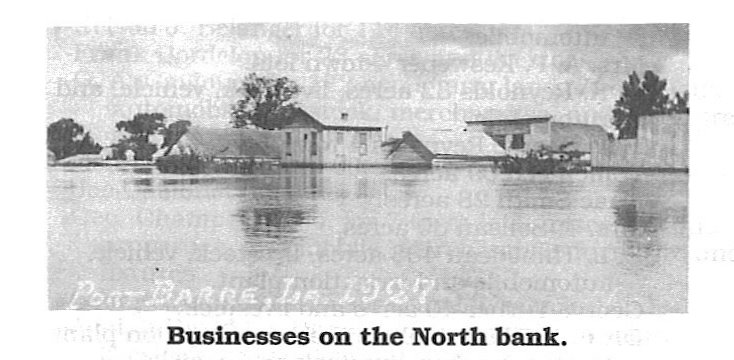Town History
|
Port Barre, also known as the "Birthplace of Bayou Teche" is a small town located along U.S. Highway 190, approximately 6 miles east of Opelousas and Interstate 49, which came into existence as a port town before the days of the railroads. Steamboats traveling along the navigable streams were the only means of transportation and movement of freight. "Barre's Landing" was started by the Barre family. In 1820, Charles Barre purchased numerous acres along the bayou side from Sieur Jacques Guillaume Courtableau where the Barre family operated a goods handling business and the settlement therefrom grew. By act of proclamation, the village of Port Barre was incorporated on the 13th day of July, 1898, by Governor J.G. Sanders. |
The history of the Port Barre area subsequently begins when France, attempting to take control of the Louisiana territory, sent Pierre Le Moyne, the Sieur d'Iberville, on an expedition to establish a permanent settlement. Iberville's rediscovery of the mouth of the Mississippi River on March 2, 1699, and the eventual settlement of Fort Maurepas (Old Biloxl), marked the beginning of the French colony of Louisiana.
The further settlement of the Louisiana colony was a slow process with many hardships and failures. Initially the only activity in this area of Louisiana was the wandering "coureurs de bois" (a woodsman, hunter and trader) who traveled the waterways and trails to trade with the Indians. It wasn't until around 1740 that one of these traders, Jean Joseph LeKintrek. established a trading post which later became known as the "Poste de Opelousas". The name for the post was derived from the Opelousas Indian tribe that claimed the area. It is believed that the main Indian \lllage was located on the same site as the present day Opelousas Catholic School.
| As Indian trade became a lucrative business in this part of Louisiana, it brought in new settlers. Joining LeKintrek in 1750 was Sieur Jacques Courtableau from New Orleans. Courtableau already had an established trading business with the Indians and was said to travel the territory between New Orleans and Spanish Texas. By 1760, Courtableau had a trading post built at the junction of present day Bayou Teche and Bayou Courtableau. This post marked the actual beginning of the written history of the Port Barre area. |
(For more history on the Town of Port Barre, see the book "The History of PORT BARRE (1765-1950)" by Cheryl Bihm Myers)

Photograph from 1927

